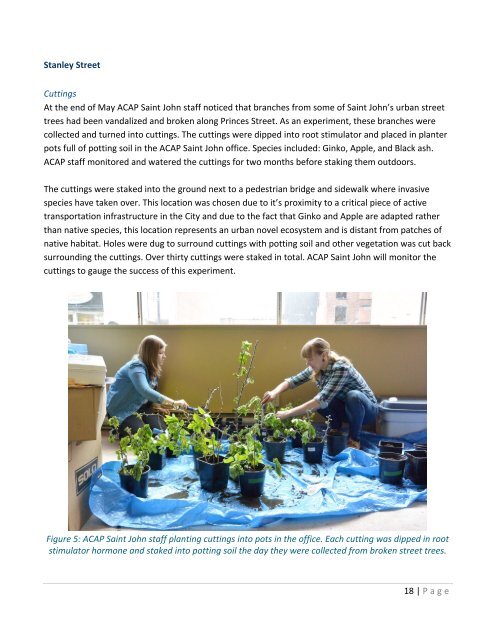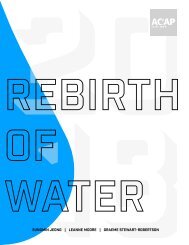10,000 Hands Report - 2016
ACAP Saint John and its community outreach initiatives have become an established vehicle by which community stakeholders can participate in hands-on improvements to their local environment. The efficiency of this program lies in its ability to maintain a strong partnership with the City of Saint John for logistic support, the New Brunswick Environmental Trust Fund for financial support, and in ACAP Saint John’s ability to maintain an established, growing and dedicated network of volunteers and experts. Through direct engagement, in-field and in-class education programs, tree planting and outdoor activities, citizens develop a sense of understanding and ownership of their environment and are more likely to support other initiatives that promote good stewardship and sustainable development.
ACAP Saint John and its community outreach initiatives have become an established vehicle by which community stakeholders can participate in hands-on improvements to their local environment. The efficiency of this program lies in its ability to maintain a strong partnership with the City of Saint John for logistic support, the New Brunswick Environmental Trust Fund for financial support, and in ACAP Saint John’s ability to maintain an established, growing and dedicated network of volunteers and experts. Through direct engagement, in-field and in-class education programs, tree planting and outdoor activities, citizens develop a sense of understanding and ownership of their environment and are more likely to support other initiatives that promote good stewardship and sustainable development.
You also want an ePaper? Increase the reach of your titles
YUMPU automatically turns print PDFs into web optimized ePapers that Google loves.
Stanley Street<br />
Cuttings<br />
At the end of May ACAP Saint John staff noticed that branches from some of Saint John’s urban street<br />
trees had been vandalized and broken along Princes Street. As an experiment, these branches were<br />
collected and turned into cuttings. The cuttings were dipped into root stimulator and placed in planter<br />
pots full of potting soil in the ACAP Saint John office. Species included: Ginko, Apple, and Black ash.<br />
ACAP staff monitored and watered the cuttings for two months before staking them outdoors.<br />
The cuttings were staked into the ground next to a pedestrian bridge and sidewalk where invasive<br />
species have taken over. This location was chosen due to it’s proximity to a critical piece of active<br />
transportation infrastructure in the City and due to the fact that Ginko and Apple are adapted rather<br />
than native species, this location represents an urban novel ecosystem and is distant from patches of<br />
native habitat. Holes were dug to surround cuttings with potting soil and other vegetation was cut back<br />
surrounding the cuttings. Over thirty cuttings were staked in total. ACAP Saint John will monitor the<br />
cuttings to gauge the success of this experiment.<br />
Figure 5: ACAP Saint John staff planting cuttings into pots in the office. Each cutting was dipped in root<br />
stimulator hormone and staked into potting soil the day they were collected from broken street trees.<br />
18 | Page

















